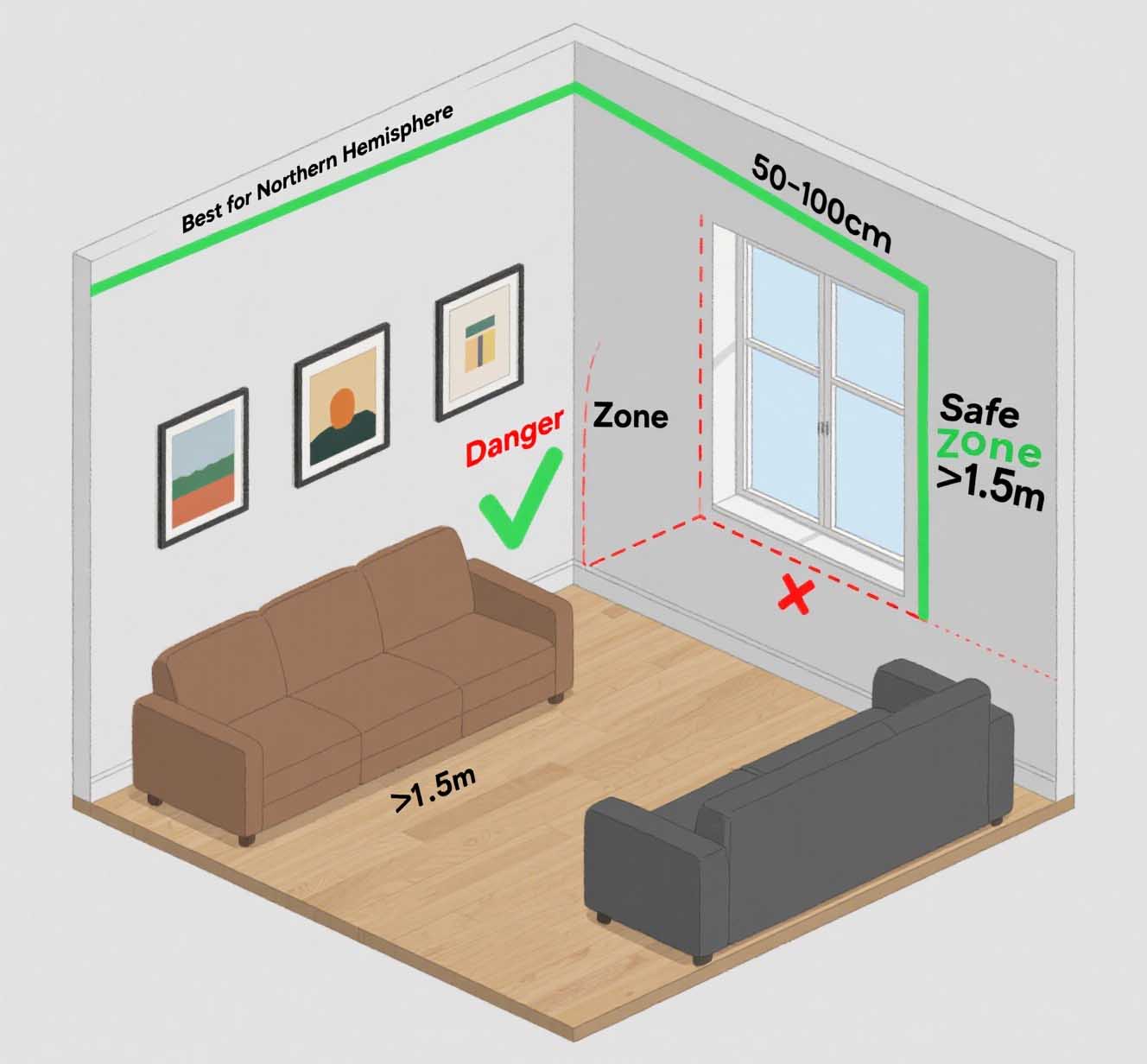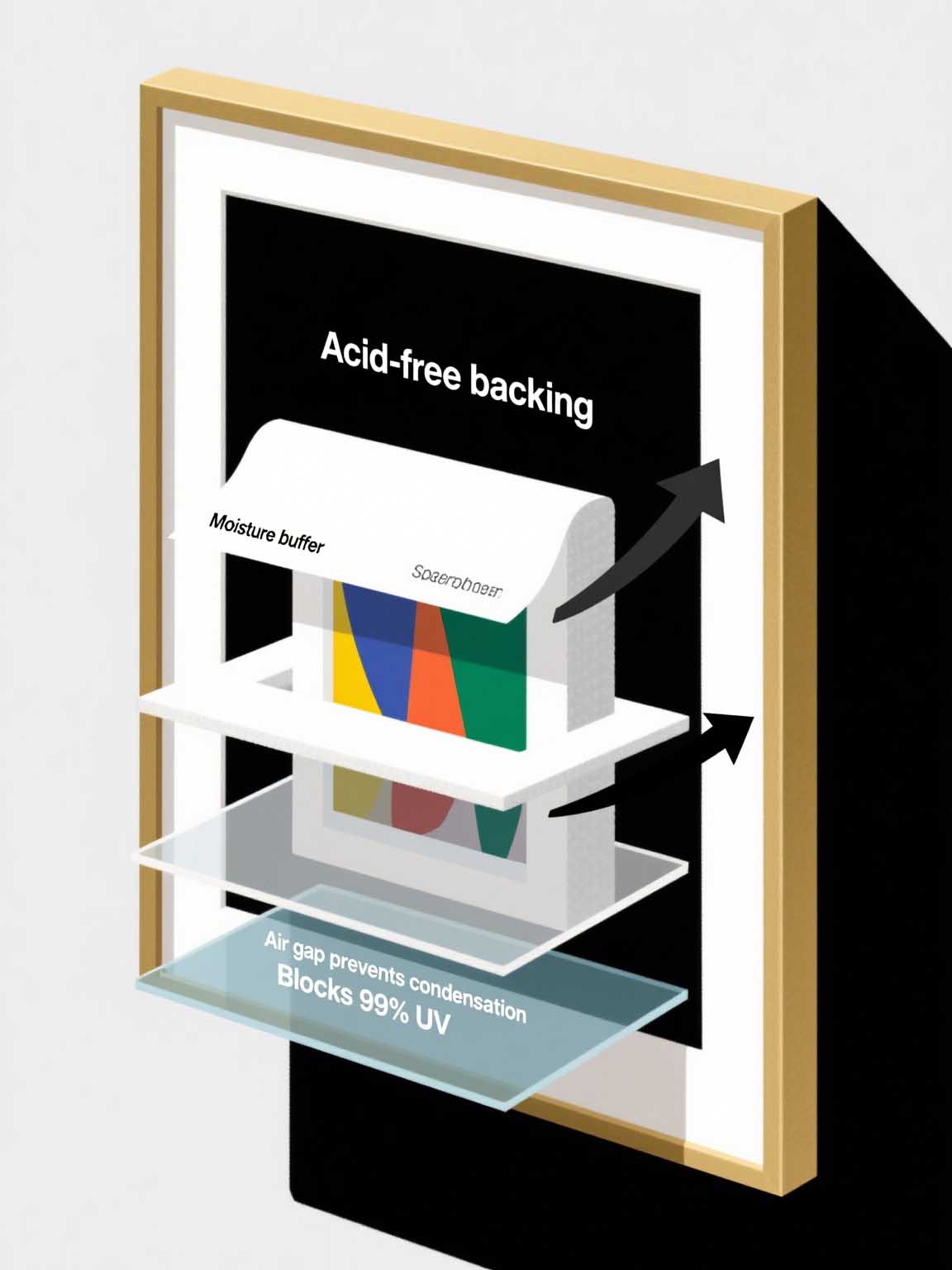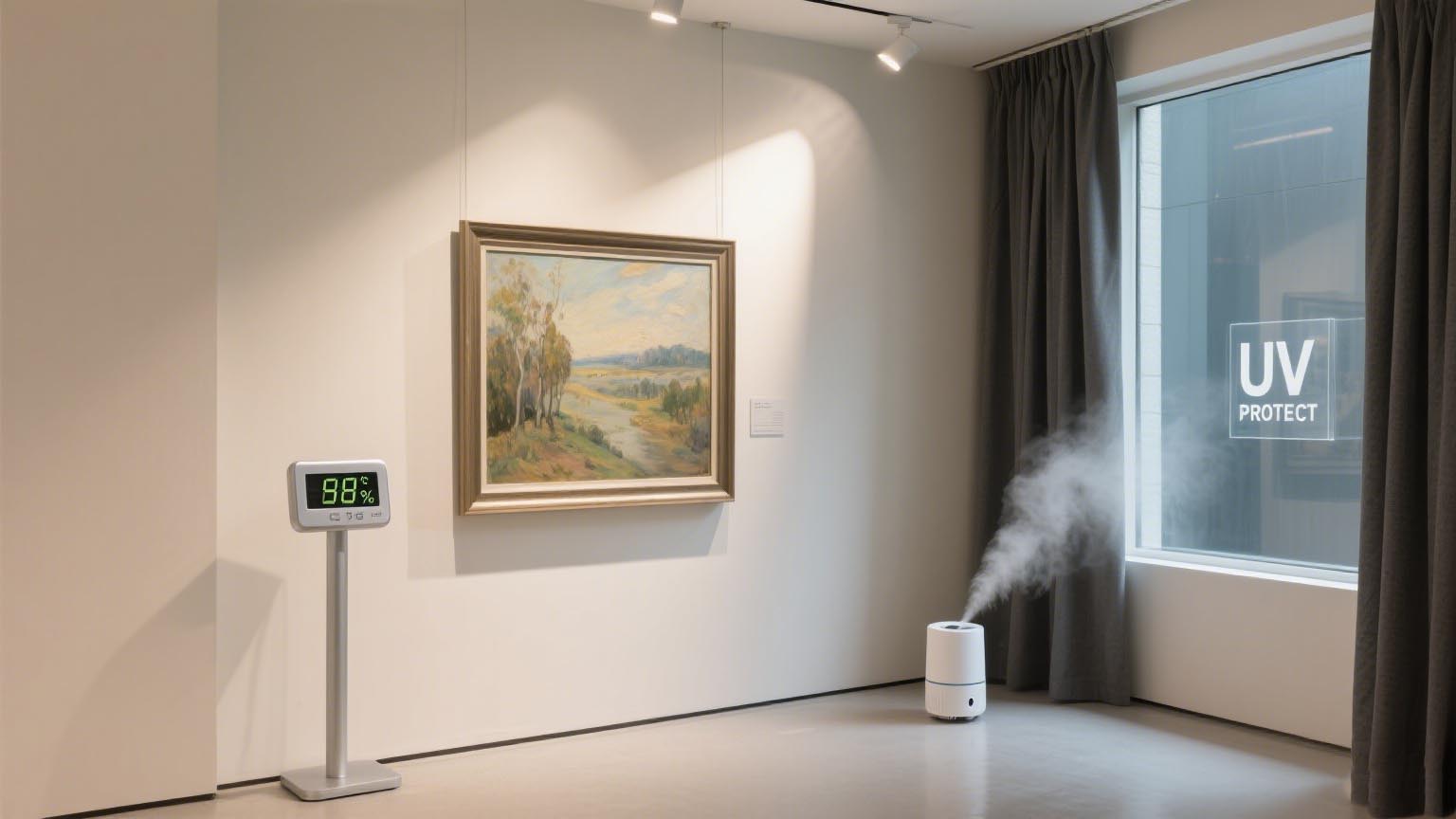Sunlight, while essential for life, is a relentless adversary to artworks. Its invisible ultraviolet (UV) rays and intense visible light act like tiny saboteurs, gradually stealing the vibrancy and integrity of paintings. Understanding how to protect your precious pieces is crucial for any collector or artist. The damage manifests differently across mediums, making tailored strategies essential for how to preserve paint effectively. Let's examine the specific threats and then outline a clear, step-by-step defence plan.
While acrylic polymer binders are generally more stable and less prone to yellowing than oils, acrylic paint sun exposure is far from harmless. The primary enemy is UV radiation, which causes pronounced fading and bleaching of organic pigments. Intense heat can also potentially soften the paint film over time, making it slightly more vulnerable to physical damage. Vibrant reds, purples, and certain blues are often the first casualties.
Watercolours are arguably the most fugitive medium under sunlight. The delicate, unvarnished pigments are directly exposed. UV radiation causes rapid and often severe fading, especially in sensitive hues like alizarin crimson, certain yellows, and greens. The paper support itself can also yellow and become brittle with prolonged exposure.
Sunlight poses a multi-faceted threat to oils. UV radiation leads to fading of susceptible pigments. Heat accelerates the oxidation process of the oil binder, potentially causing the paint film to become brittle and crack over decades. Furthermore, prolonged exposure, particularly in lower light conditions combined with heat, can lead to the development of a yellowish or brownish "oil varnish" layer within the paint itself, dulling the original colours (a process distinct from surface varnish yellowing). Darker areas are particularly prone to this effect.
Protecting your artwork from sunlight’s damaging effects requires proactive measures. Follow these steps to ensure your pieces remain vibrant for years to come.
The most effective defence is distance and shade. Never hang valuable artworks in direct sunlight. Position them on walls receiving only indirect, diffused natural light. North-facing walls (in the Northern Hemisphere) typically receive the gentlest light.
Maintain a significant buffer zone – ideally several feet (at least 50-100 cm) – away from windows, skylights, and glass doors. Consider the sun's path throughout the day and seasons; a spot safe in winter might be blasted in summer.

Framing is your artwork's primary physical shield. Always use UV-filtering glass or acrylic glazing (e.g., Optium Museum Acrylic®, Tru Vue Conservation Reflection Control® or UV70® glass). Standard glass blocks only about half of damaging UV rays; quality conservation glazing blocks 97-99%.
For acrylic paintings, UV-filtering acrylic glazing is often preferred over glass due to weight and shatter resistance. Ensure the glazing does not touch the paint surface; use spacers or a mat board to create an air gap, preventing condensation and sticking, especially crucial for watercolour and oil paintings.

Sunlight brings heat. High temperatures and fluctuations in humidity accelerate the degradation of all mediums and their supports (canvas, paper, wood). Maintain stable environmental conditions: aim for a relative humidity around 45-55% and a temperature around 18-21°C (65-70°F).
Avoid hanging art above radiators, fireplaces, or in damp basements. Consider using dehumidifiers or humidifiers if necessary to stabilise the climate in the room, but avoid placing units too close to the artworks. Heavy curtains or UV-filtering window films applied directly to windows provide an additional layer of protection, reducing overall light and heat entering the room.

If you possess a collection of light-sensitive works, particularly watercolours or pieces with known fugitive pigments, implement a rotation schedule. Periodically (e.g., every 3-6 months) replace artworks on prominent display with others stored in dark, climate-controlled conditions.
This gives each piece essential 'rest' time away from cumulative light exposure, significantly prolonging its lifespan and colour fidelity.

Invest in conservation-grade framing from the outset. This includes using acid-free mats and backing boards to prevent chemical degradation migrating to the artwork. Ensure the frame provides adequate physical support.
Dust frames and glazing gently with a clean, soft, slightly damp microfibre cloth; never spray cleaner directly onto the glazing near the frame edge where it could seep in. For valuable or significantly aged oil paintings, consult a professional conservator regarding varnish removal and reapplication, as old, yellowed varnish can drastically alter appearance and a new UV-filtering varnish can offer protection (though not a substitute for glazing and placement). Never attempt to clean paintings yourself beyond gentle surface dusting with a soft brush.
Art exists in a perpetual dialogue with its environment. Light, essential for its appreciation, can also be its quiet, relentless adversary. From the fugitive whispers of watercolour to the complex chemistry of oil paintings and the UV vulnerability within even modern acrylic paint sun exposure demands respect.
Protecting our artworks is not merely an act of preservation; it is a commitment to honouring the artist's original vision and ensuring the work's story endures for future eyes to read and hearts to feel. By mastering the interplay of placement, barriers, environment, rotation, and professional care, we become stewards, safeguarding the vibrant dialogue between colour, form, and time itself.

Hi, I’m Philo, a Chinese artist passionate about blending traditional Asian art with contemporary expressions. Through Artphiloso, my artist website, I share my journey and creations—from figurative painting and figure painting to floral oil painting and painting on landscape. You'll also find ideas for home decorating with paint and more.
Store and display paintings away from sunlight and moisture, using UV-protective glass to preserve paint longevity.
Protect canvas paintings with UV-filtering glass, stable humidity, and by avoiding direct sunlight or heat.
Standard window glass blocks approximately 40-50% of UV radiation. Conservation-grade glazing blocks 97-99%.
Yes, professionally applied UV-filtering window film significantly reduces UV exposure for an entire room, complementing picture glazing. Ensure it's a high-UV-rejection film designed for conservation.
Quality LED lights emit negligible UV radiation and very little heat, making them a far safer option for illuminating artwork than halogen or incandescent bulbs. Ensure they are not excessively bright or close.
This depends on light levels. In a room with strong indirect light and UV-filtered windows, rotating every 6-12 months is often sufficient. For very sensitive pieces or brighter rooms, every 3-6 months is advisable.
While complete darkness eliminates light damage, it prevents enjoyment. The goal is balanced exposure: display using protective measures and rotation, allowing enjoyment while minimizing cumulative damage. Long-term storage of unframed works should be in the dark, within archival materials.
